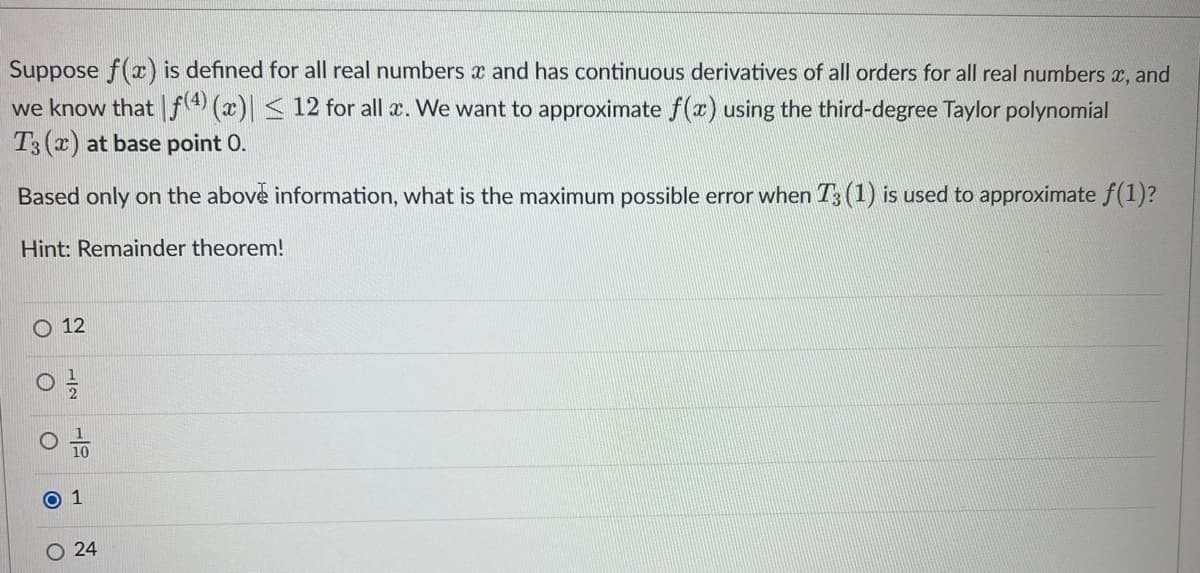Suppose f(x) is defined for all real numbers and has continuous derivatives of all orders for all real numbers x, and we know that f(4) (x)| ≤ 12 for all x. We want to approximate f(x) using the third-degree Taylor polynomial T3 (x) at base point 0. Based only on the above information, what is the maximum possible error when 73 (1) is used to approximate f(1)? Hint: Remainder theorem! O O O 12 1 O 24
Suppose f(x) is defined for all real numbers and has continuous derivatives of all orders for all real numbers x, and we know that f(4) (x)| ≤ 12 for all x. We want to approximate f(x) using the third-degree Taylor polynomial T3 (x) at base point 0. Based only on the above information, what is the maximum possible error when 73 (1) is used to approximate f(1)? Hint: Remainder theorem! O O O 12 1 O 24
College Algebra
7th Edition
ISBN:9781305115545
Author:James Stewart, Lothar Redlin, Saleem Watson
Publisher:James Stewart, Lothar Redlin, Saleem Watson
Chapter3: Polynomial And Rational Functions
Section3.5: Complex Zeros And The Fundamental Theorem Of Algebra
Problem 3E: A polynomial of degree n I has exactly ____________________zero if a zero of multiplicity m is...
Related questions
Question

Transcribed Image Text:Suppose f(x) is defined for all real numbers and has continuous derivatives of all orders for all real numbers x, and
we know that f(4) (x)| ≤ 12 for all x. We want to approximate f(x) using the third-degree Taylor polynomial
T3 (x) at base point 0.
Based only on the above information, what is the maximum possible error when 73 (1) is used to approximate f(1)?
Hint: Remainder theorem!
O
O
12
0 1
O24
Expert Solution
This question has been solved!
Explore an expertly crafted, step-by-step solution for a thorough understanding of key concepts.
Step by step
Solved in 2 steps with 2 images

Recommended textbooks for you

College Algebra
Algebra
ISBN:
9781305115545
Author:
James Stewart, Lothar Redlin, Saleem Watson
Publisher:
Cengage Learning

College Algebra
Algebra
ISBN:
9781305115545
Author:
James Stewart, Lothar Redlin, Saleem Watson
Publisher:
Cengage Learning